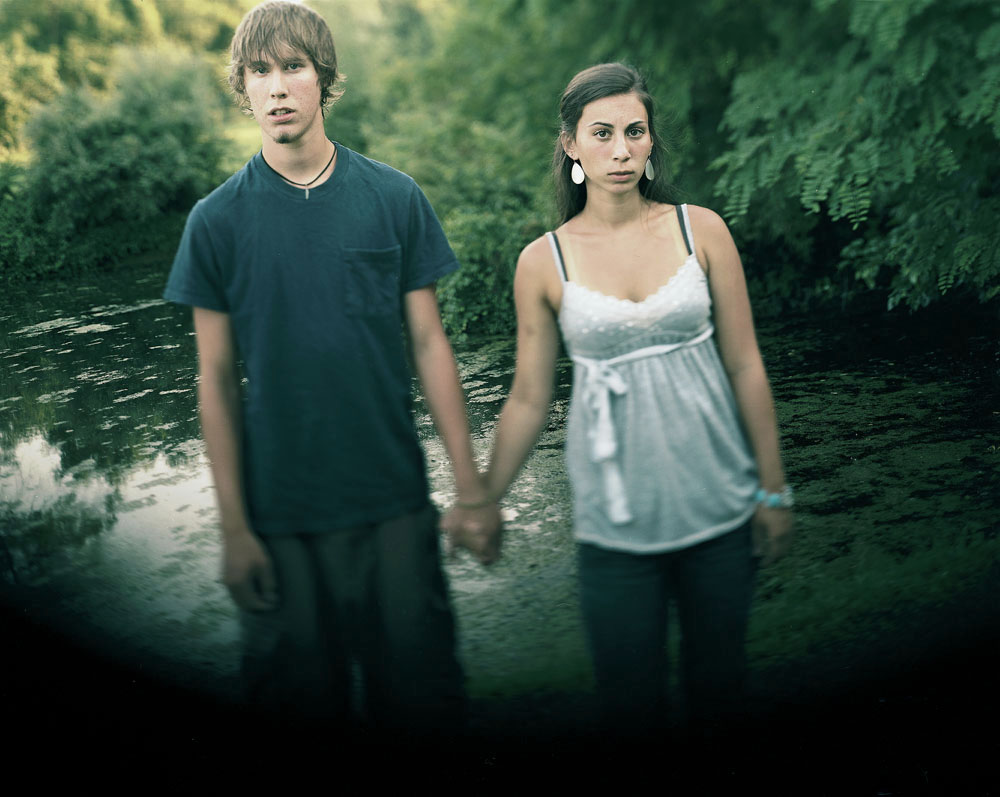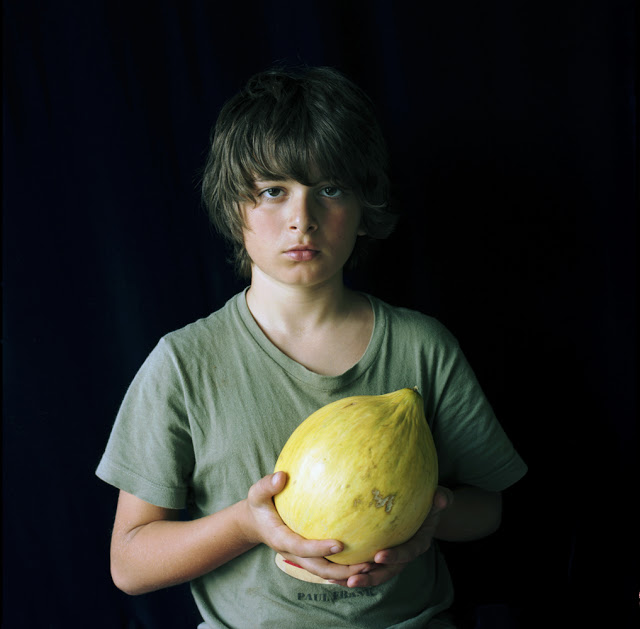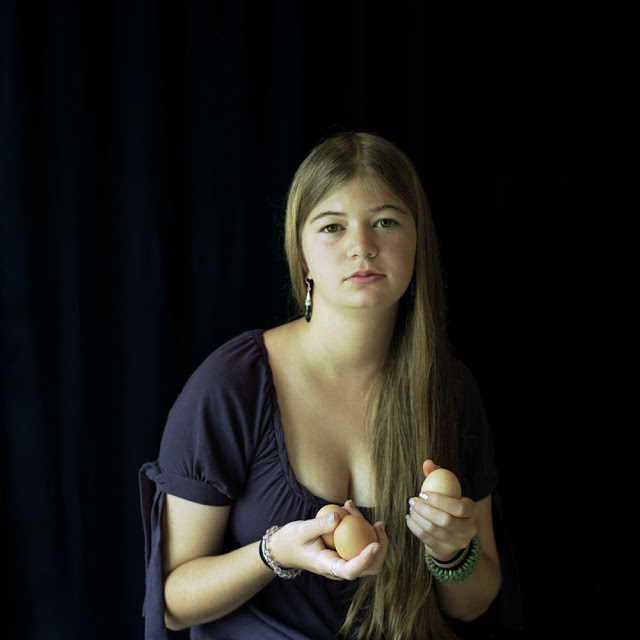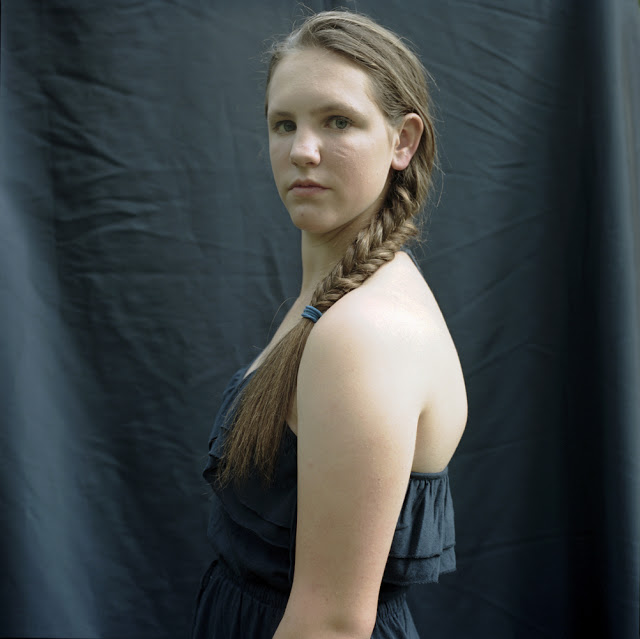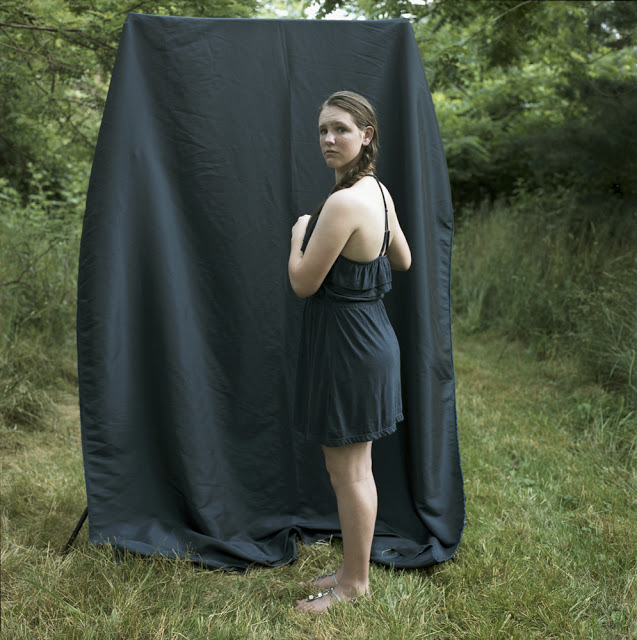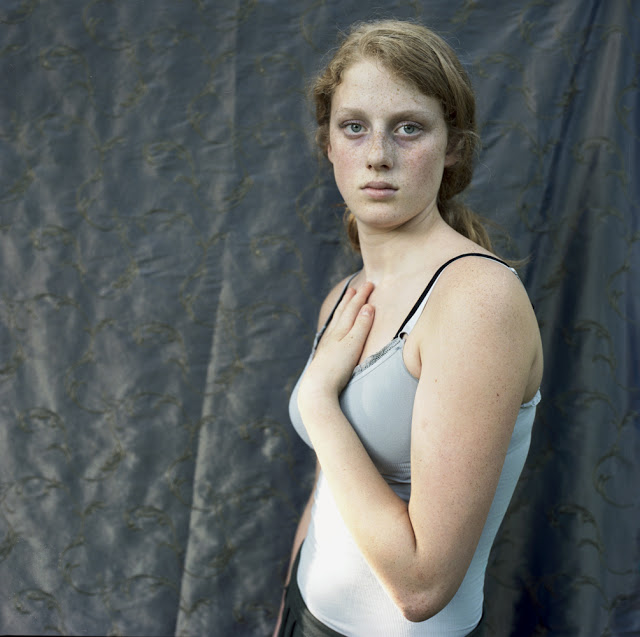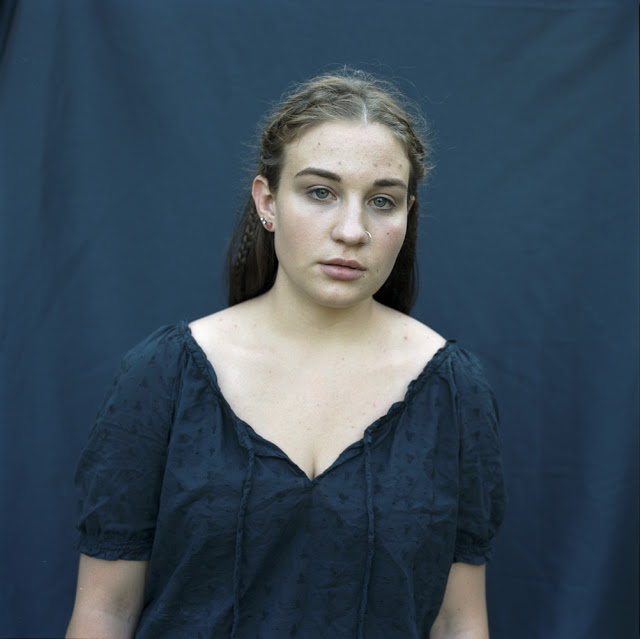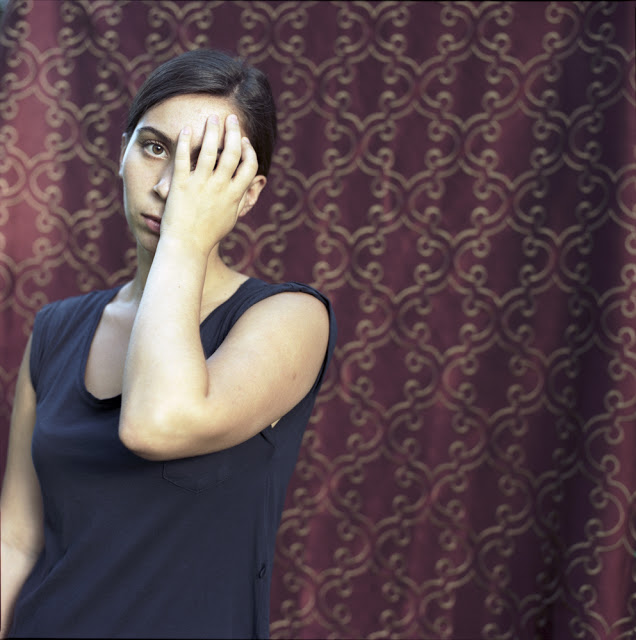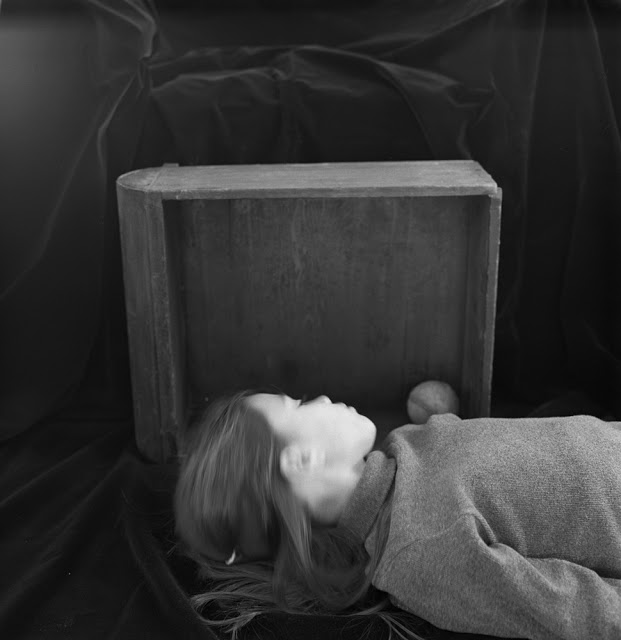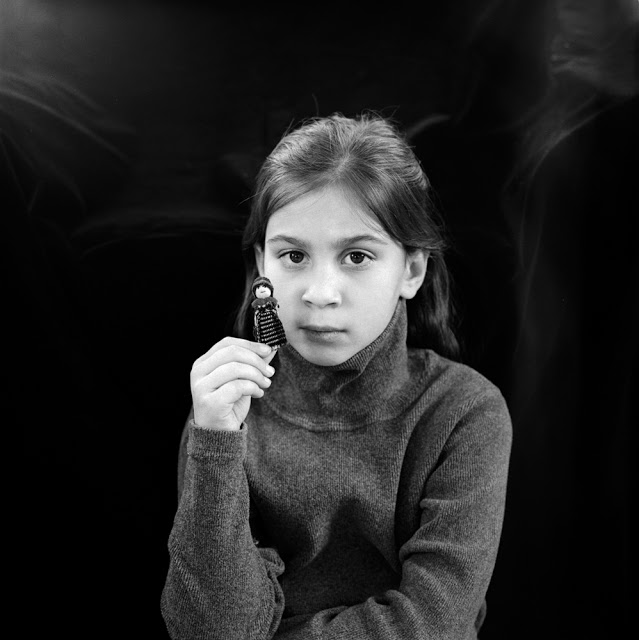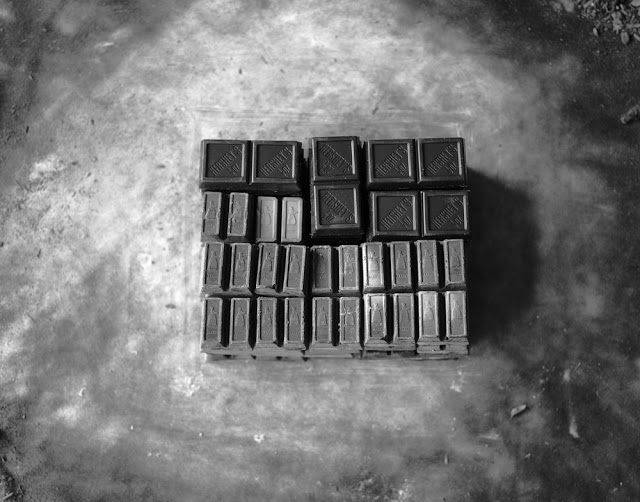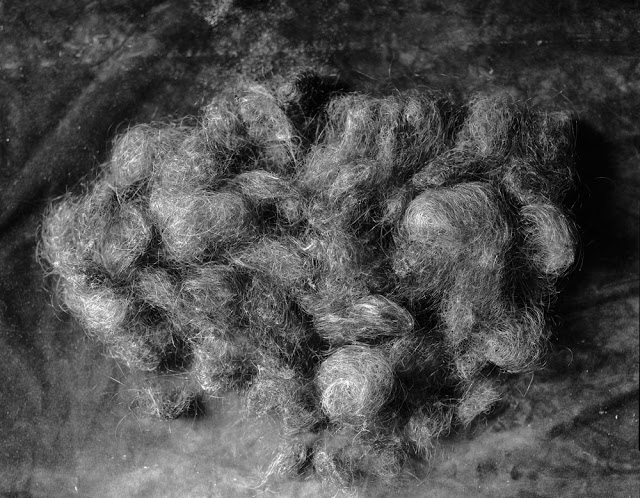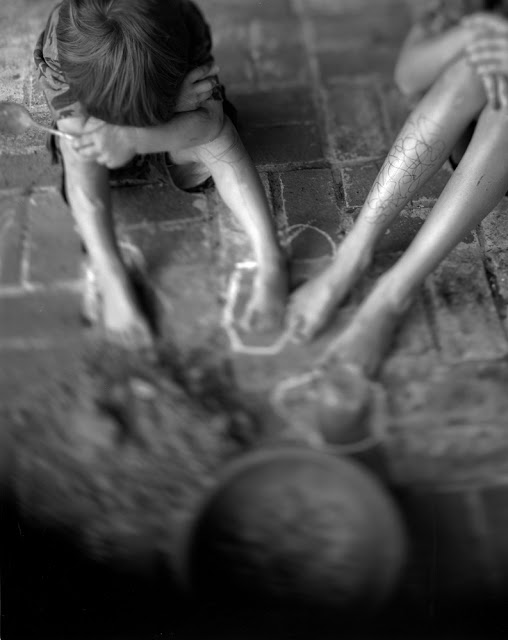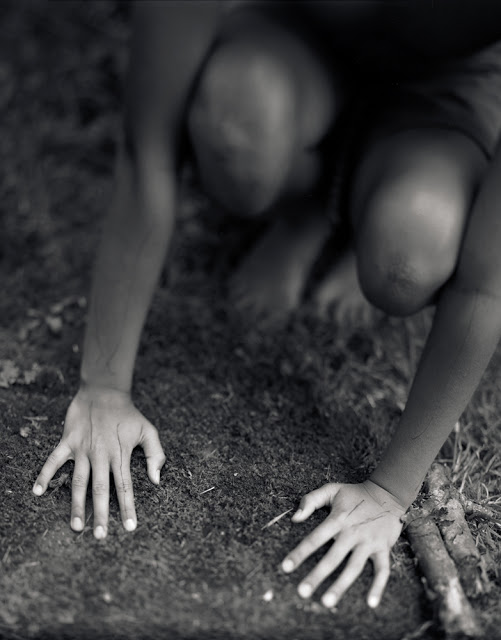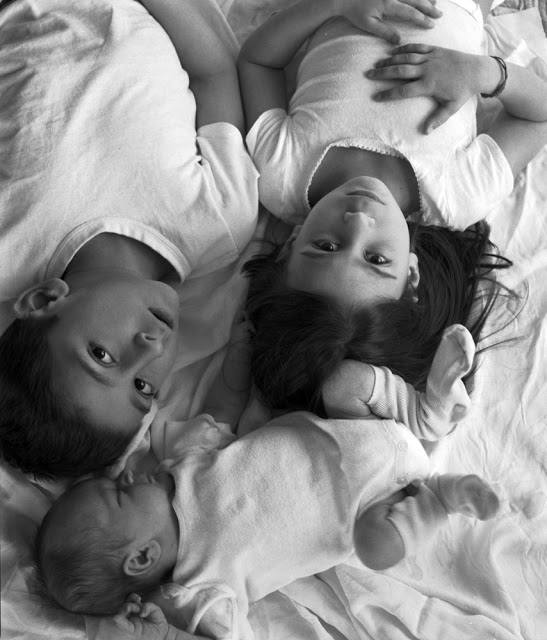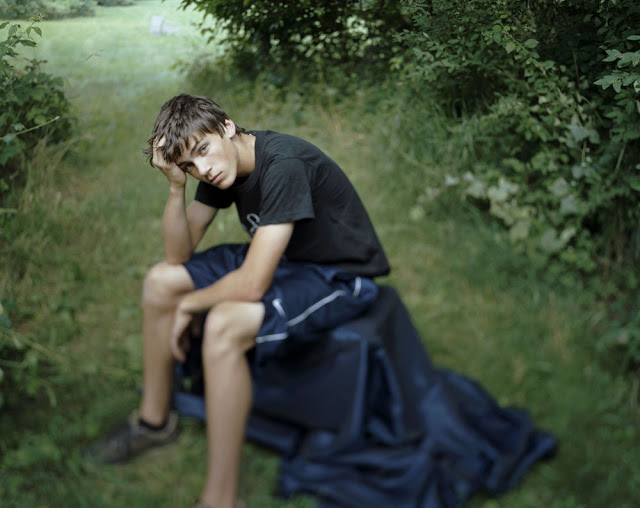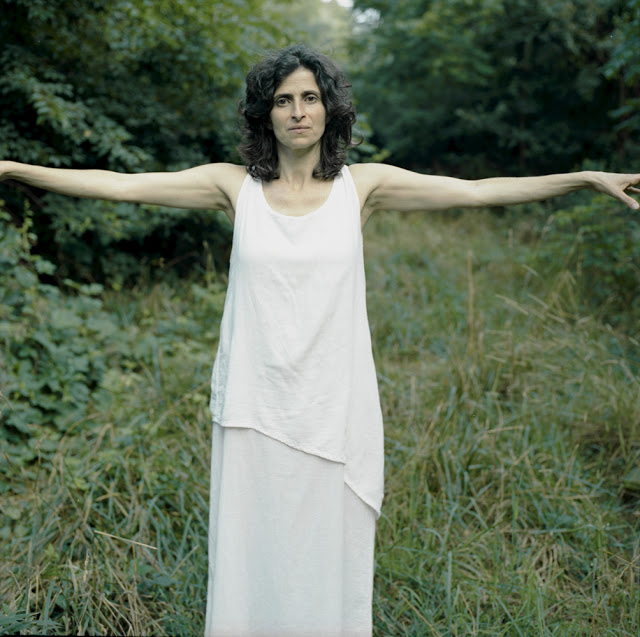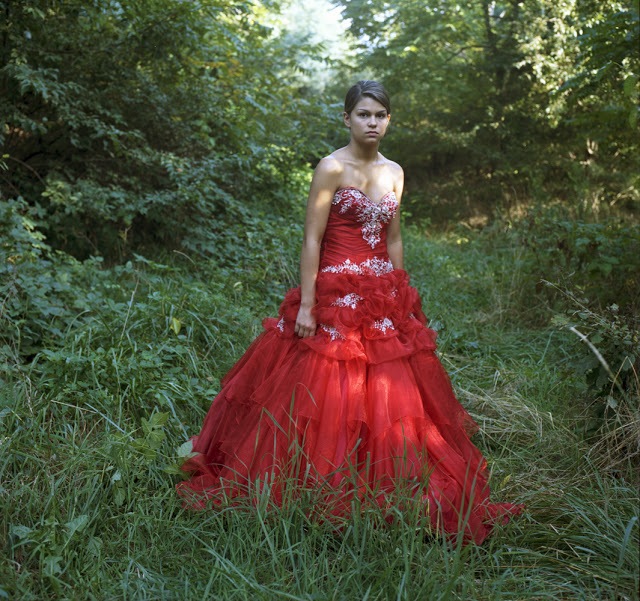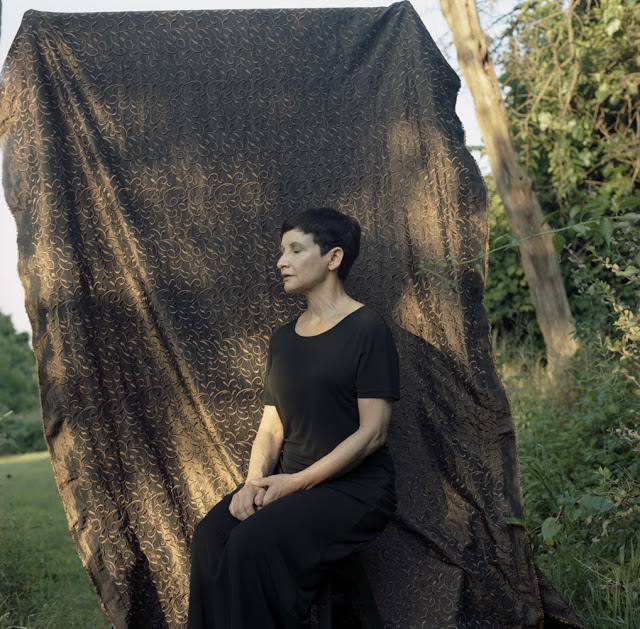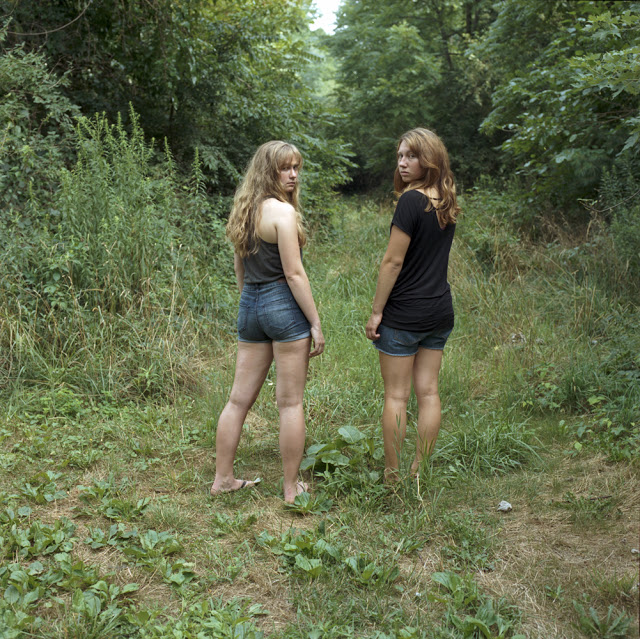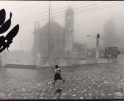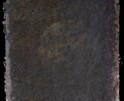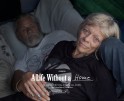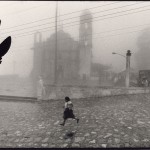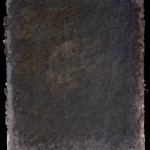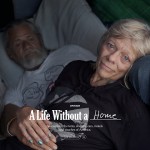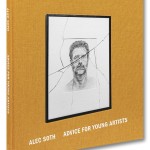Today I have the great pleasure in interviewing photographer Lydia Panas about her well celebrated book and photographs. I met Lydia a number of years ago when we were in a show together in New York, and have watched her career and work with great interest. Lydia is one of the great portrait photographers, bringing layers of psychological nuance to her images. “My photographs are certainly the result of seeing something in the model, but also something I recognize in myself. This makes for a good collaboration. My photographs are always a portrait of the model and of myself simultaneously.”
Lydia’s work has been exhibited internationally and is held in major public collections including the Brooklyn Museum, The Museum of Fine Arts Houston, The Museum of Contemporary Photography Chicago, MoMA Shanghai and the Allentown Art Museum among others. She was one of nine artists selected by Houston Fotofest curators for the prestigious International Discoveries Exhibition in 2007, and won First Prize for a Publisher’s Choice Singular Image Award at CENTER, Santa Fe in 2009. Her work is included in the Taylor Wessing Portrait Prize Exhibit, at the National Portrait Gallery, London, through February 2012.
Lydia’s work has been published extensively and featured in periodicals such as The New York Times Magazine, Photo District News, Popular Photography, The San Francisco Chronicle and The Wall Street Journal Blog. Lydia has degrees from Boston College, the School of Visual Arts and New York University / International Center of Photography as well as a Whitney Museum Independent Study Fellowship. Her first monograph The Mark of Abel was released by Kehrer Verlag and named one of Photo District News’ Books of 2012 as well as one of the top ten coffee table books of 2012 by the Daily Beast.
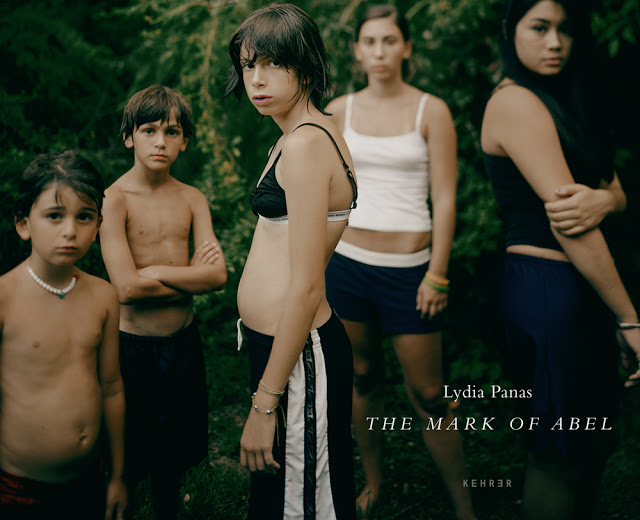
A belated congratulations on your terrific book, The Mark of Abel, released by Kehrer Verlag, (and all the nods for best book of 2012, including PDN!)….can you tell us how the book came about?
Thank you Aline. I wanted to publish this work in book form for a long time. Basically, I met Alexa Becker (acquisitions editor at Kehrer Verlag) at Paris Fotofest and we decided to go with it. We came up with a publishing date and that was pretty much it.Kehrer is very straight- forward. They have a great team, from the designers to accounting, and all the way in between. They were very gracious when I went to Heidelberg. Really nice experience.
images from Mark of Abel
First Love
Your work draws a worldwide audience—it’s ironic because much of it is created in your backyard—what makes this work so universal?
I think that the more specific the work, the more universal it becomes. I let specificity find me. There has to be a feeling, a thought, a connection when I work, that feels very close to me. This happens most easily when I work at home, where I feel safe and can allow myself to look inward. When I travel, for instance, I look outward, and try to absorb what I see. My travel pictures are easier pictures, less specific, less pointed, more casual. I consider my fine art work to be more tuned in to what is important to me. That’s not to say that I can’t go somewhere, get comfortable, and make good work, but generally, I photograph what I know and where I know it best. It seems to be truest that way and holds the most interest for me in the way of a sustained project.
When I look at the work of others, this includes music, literature, etc, what I find most interesting are the clues that tell me who that person is on a personal level. This is what I think people connect to in my work as well.
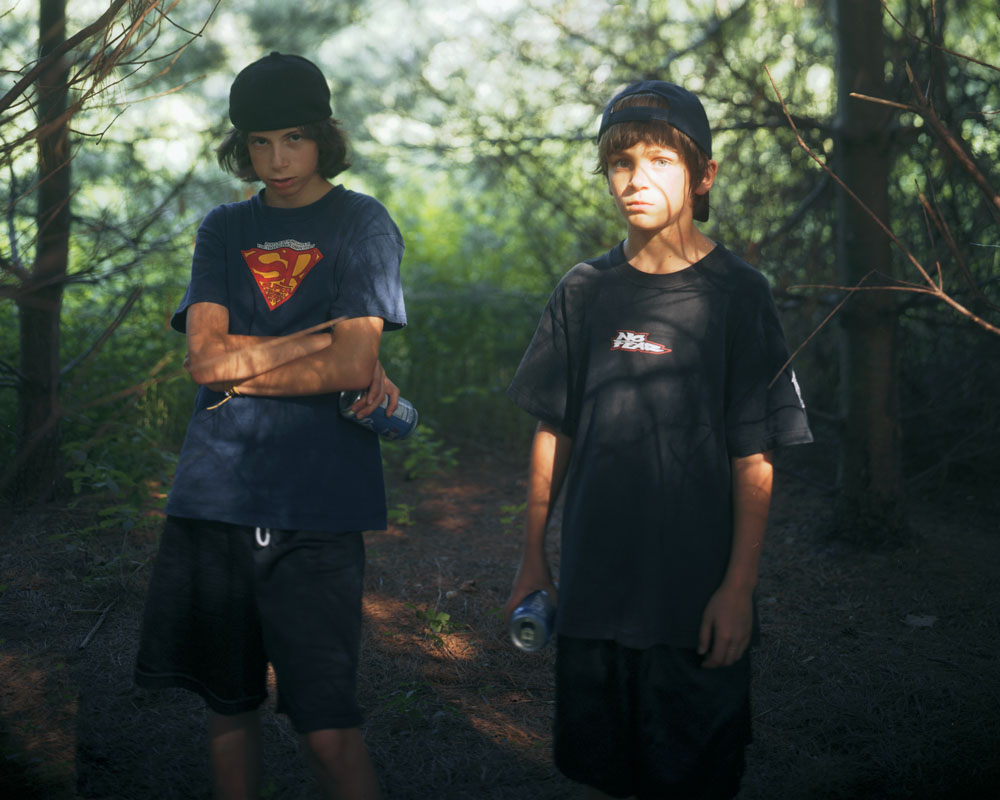
Following Bzantium
Your psychological portraiture is truly compelling. Sometimes when I look at your work, I see the space between contemplation and animation, the space that we are in when no one is looking. Is that how it feels to you?
Making portraits is a serious business for me. It’s both about connecting with the person in front of me as well as to myself. I connect to things I would never expect. In my “Falling From Grace…” series for instance, I found myself clicking the shutter when the model had a kind of neutral expression, which makes the encounter with the audience unclear. I feel compelled to create this sort of sense in my portraits. The subject of the photograph is both strongly present, and in a way, not present at all. It recreates what it feels like to be in the presence of someone with whom you are unsure how they will react to you. The encounter is unsettling and mysterious and leaves the viewer somewhat uncomfortable.
My portraits describe things which seem to be universal. I try to understand and describe the deep-seated things we feel that are not so easy to access. People often tell me they can’t explain it, but they can connect to it.
And I agree that it is a space that generally goes undetected, and something we feel when no one is looking.
images from Falling from Grace…
Fancy Melon
Eggs
Chili Peppers
Your new portrait project. After Sargent, feels like a different approach. What was it in Sargent’s work that inspired this way of working? Do the backdrops change the way you see the portraits?
“After Sargent” was inspired by a trip I took to the Museum of Fine Arts in Boston to see John Singer Sargent’s painting “Four Daughters of Edward Darley Boit”. The painting itself is amazing, and I lingered in the Sargent galleries and studied the single portraits as well. I was most affected by Sargent’s attention to the spirit of his models and his own response to them. I find his most successful works to be the ones that feel like photographs. My photographs from this series don’t look like Sargent’s paintings, but they are inspired by the acuity of his psychological connection to his models.
painting by John Singer Sargent
At the time, I was ready to begin a new project. I also wanted to photograph outdoors again, so I thought I might combine the outdoor aspect of “The Mark of Abel”, with the indoor aspect of “Falling From Grace…”, so I moved the fabrics outdoors and played with including and excluding the background scenery.
images from After Sargent
Gracie
This series helped me understand more about what I connect with when I make photographs. Making a portrait incorporates a spectrum of emotions and although not specific, can articulate impressions otherwise difficult to express.
Gracie (far)
When I make a portrait, I watch to find something I know. Often it is a feeling left over from my past. It may be something I long for, or a feeling that helps me connect. Making portraits helps satisfy my curiosity and re-create what I did not understand in my early years, things that were hidden from me that I was desperate to understand.
Corrine
The background fabrics work similarly to the woods in my family portraits. The subjects have no context. The fabrics are simpler and I work only with face, gesture and posture. I have to make a strong connection with the model to get anything to happen, as context will not give me a hand.
Maria + Corrine
Do your models see something new in themselves when they see the results of the portrait session? Are they surprised by the results?
They are often surprised. The subjects who are involved with art tend to feel easier about the pictures. Some of the models say they are not used to seeing themselves the way I portrayed them. My photographs are certainly the result of seeing something in the model, but also something I recognize in myself. This makes for a good collaboration. My photographs are always a portrait of the model and of myself simultaneously.
Shaylin
Shaylin (back)
Anna (Red Fabric)
Claire + Sonia
Margot
Ashley
I’m curious about what your early work looked like. Did you always focus on portraiture?
I made a lot of portraits in the past, especially of my children as they were growing. I worked mostly in black & white. Photographing the kids was a good solution to making work, during a period in my life when I had very little time, raising three kids and teaching. It was also an opportunity to spend more time with the kids. The pictures I made during that time are conceptual in nature, and not really portraits of the children as much as vehicles to convey my own ideas.
Lukas
Anna Baseball
Ana with a Guatemalan Doll
I also spent a number of years making still lifes. For instance, I spent the years 2000 -2002 collecting three items; lint from my clothes dryer from washing my family’s clothing, hair that fell from my head when I blew dry my hair, and baker’s chocolate. I photographed groupings of the individual items as they accumulated, so the final presentation is a grid of collections of the three items as they gradually increase in number.
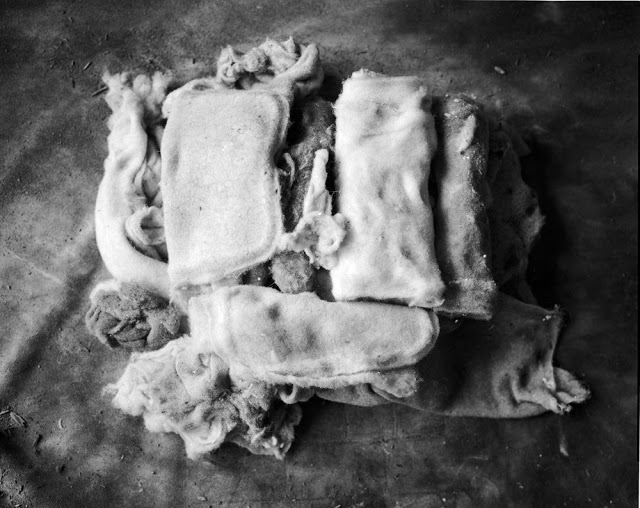
Twenty Nine Cycles
Nine Portions
One hundred and Seventy Four Blows
As with all my work, it revolved around my personal world, it was a conceptual rendition of my personal space, and it still involved the kids, without them having to pose, as they had decided by that point that they did not want to sit for the camera anymore.
Naughty Children
For a number of years I kept a piece of cloth on the floor of my then very small studio, and I would cover it with dirt or powder and draw in the dirt or the powder. I did a number of conceptual series in this manner. One of the series involved scratching designs on the emulsion side of the negative that worked with the photographed image. These works look very different from the work I make now, but the impulse is the same. Whether I am making a portrait or still life, or photographing something else, it is always a journey to understand where the work will take me. I find that the more insular and specific the work, the more universally it seems to resonate.
Prayer
Your children have been active participants in your projects. How do they feel about their photographic legacy?
They never had much interest in posing, probably due to how independent they are, and this was mom’s “deal”. They are proud of me, but my work is not something they are focused on. Each of them is involved in their own interests as deeply as I am involved in mine. They will sit for me on occasion if I am beginning a new project, but they take their participation in stride.
I think they enjoy seeing themselves in the photographs now, but truthfully, they haven’t always run to my openings, especially the boys. My sons, for years, in response to my queries to come to an opening, would say, “I would come, mom, but I’ve already seen those pictures” !!! I have to laugh. I am not sure they see it as a legacy, or maybe not yet. They are proud though, I am sure of that.
White T Shirts
Liam with Blue Fabric
What advice can you give to emerging photographers?
My best advice is to trust yourself and the way you see. The best work comes from not being afraid to expose yourself. You need to be willing to look at what lies closest to your heart and find a way to present it without the limitations of what others expect and find acceptable. Only when you make it fully yours, does it find it’s place or it’s voice. In the early stages of my projects I hear a lot of doubt from others. If I followed everything I heard I would not be doing the work that I make now. You need to listen and to understand what is helpful and what is not. The work has to say what you need it to say, not what someone else thinks you should do.
Pana
What’s next?
I am working on a new series, shooting fabrics in the landscape. They are verticals and look completely different from the sharp, precise photographs I have been making. I shoot mostly in bad weather, like fog and rain. They are softer, and the images are mostly out of focus. I work with the fabrics as if they are portraits. They lean and sway and move around. They are a tribute to my father with whom my husband and I planted about 1000 trees every year for 10 years. My father died too soon to see them mature. But they have grown and they stand all around me. They are his legacy. The photographs feel lonely and monumental and sort of sculptural. The series is about ghosts and memories that linger on the property where I live.
Tia Angela
And finally, what would be your perfect day?
Hmmmmmm. Maybe waking up at home on a sunny day, not getting out of bed until about 8. A latte for breakfast with my husband, and fresh flowers on the counter. Windows open, the birds singing and all three of my children home, happy and not having to rush out. I can’t imagine anything better. Oh, and then my children agreeing to be photographed without a limit on the number of pictures I can take.
Casey and Emily



